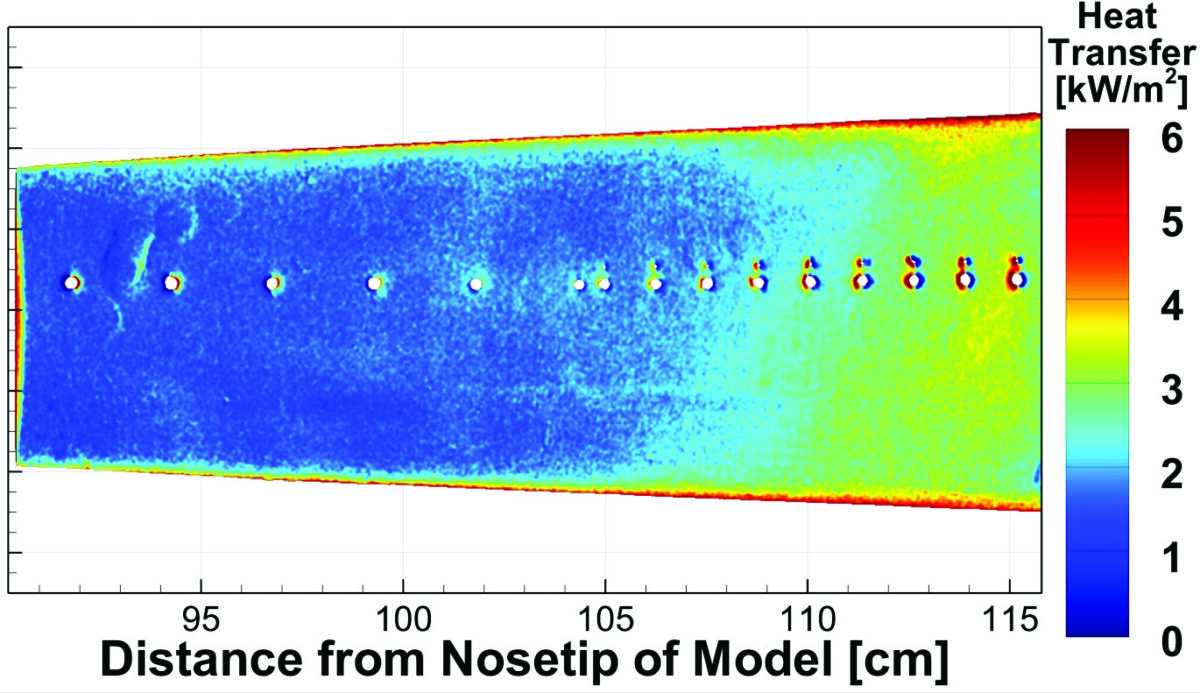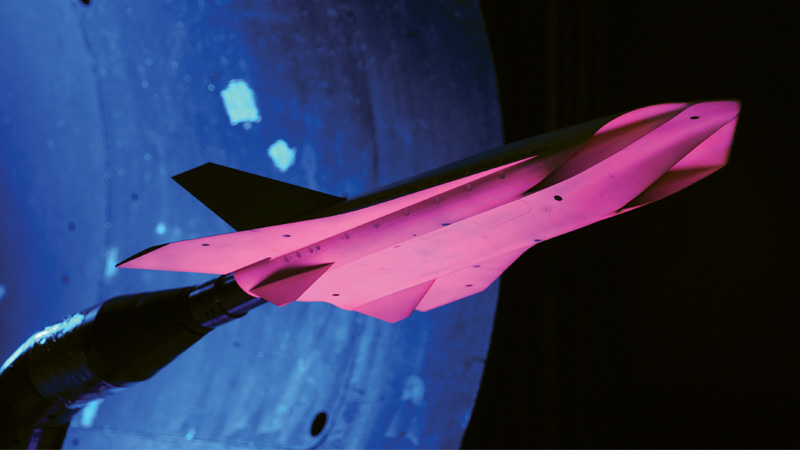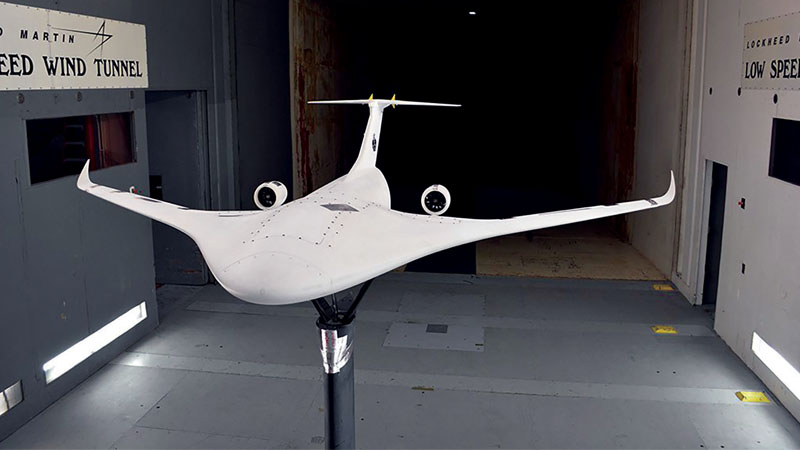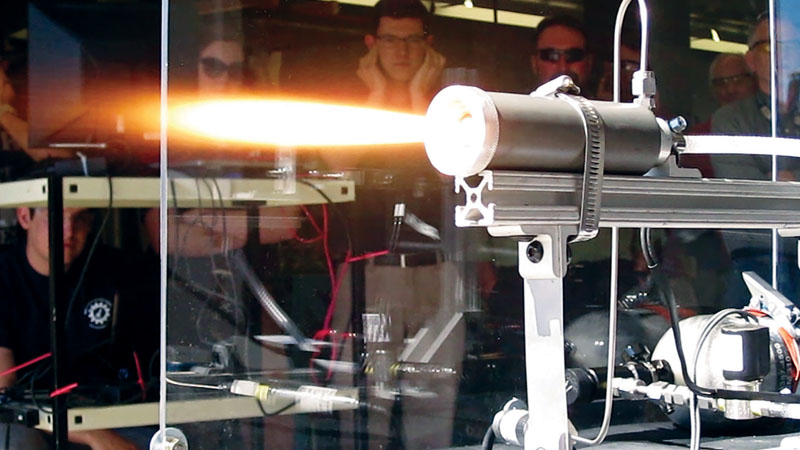Experimental-numerical campaigns give insight into complex fluid phenomena
By David González and Albert Medina|December 2019
The Fluid Dynamics Technical Committee focuses on the behaviors of liquids and gases in motion, and how those behaviors can be harnessed in aerospace systems.
Advances in the field of fluid mechanics serve as testament to the breadth and rigor of the discipline, with contributions spanning all regimes from low-speed to hypersonics. In a first, researchers at Purdue University observed a hypersonic boundary-layer transition on a 2.5-degree half-angle straight cone under fully quiet flow conditions. These experiments in February at the Boeing/Air Force Office of Scientific Research Mach-6 Quiet Tunnel documented the growth, breakdown and transition to turbulence of the second-mode instability. This mechanism dominates laminar-turbulent boundary layer transition in hypersonic flows and is characterized by a trapped acoustic wave. Researchers observed the primary manifestation of the increase of heat transfer near transition onset and its continual subsequent increase until the end of the cone.
Shock-wave boundary-layer interactions are ubiquitous in high-speed flows, existing on internal and external surfaces of a supersonic/hypersonic flight vehicle. These interactions result in flow separation, vortical structure formation, pressure losses, induced pitching moments and other effects that are often detrimental to the vehicle’s operation. Researchers at Florida A&M University, Florida State University and the U.S. Air Force Research Laboratory collaborated in April and May in a study involving high-fidelity experiments and numerical simulations for the Air Force Office of Scientific Research to understand the flow physics associated with shock-wave boundary-layer interactions and shock-shock interactions on an axisymmetric configuration. The researchers performed flow
visualizations and pressure measurements at Mach 2. Results showed that a shock emanating from the wedge impinges on and wraps around the body leading to crossflow separation and reattachment, features that greatly differ from the well-documented 2D/3D canonical shock-wave boundary-layer interactions configurations on flat surfaces.
Integrated approaches employing complementary experimental and numerical campaigns such as that described above continue to provide fundamental insight. These are critical to developing a deeper understanding of high-speed fluid dynamic phenomena and enable the formulation of highly accurate modeling and advancement of simulation capabilities. Such complex-modeling proficiencies will facilitate the development of materials suitable for the austere environments, the development of potential flow control techniques to mitigate heat transfer in key areas of interest and the efficient design of next-generation high-speed flight vehicles.
Regarding low-speed aerodynamics, researchers at AFRL pioneered the use of large-eddy simulation to study the flow processes leading to the onset of stall for a rapidly pitching airfoil. This effort, completed in March, highlighted the importance of understanding the unsteady boundary layer development as the pitching airfoil approaches the dynamic stall event. The researchers applied large-eddy simulation over a range of Reynolds and Mach numbers as well as to finite wings, including sweep effects and standard wind tunnel end-plate conditions. The technique resolved a highly complex flow field in which a transitioning, separated, nonequilibrium boundary layer interacts with a locally supersonic flow. The research resulted in an innovative flow control concept and insight into the unsteady interactions responsible for the dynamic stall event.
Between September 2018 and May 2019, researchers at Los Alamos National Laboratory in New Mexico developed physics-constrained machine learning algorithms for spatio-temporal modeling of turbulence, owing to a paucity of machine learning algorithms capable of effectively modeling 3D datasets. Specifically, they developed neural networks with a combination of convolutional and recurrent architectures that account for spatial and temporal nonlinearities in fluids. The resulting model can replicate high-fidelity 3D turbulence at a computational cost several orders of magnitude lower than traditional numerical schemes. The performance of these learning algorithms was quantified on well-known cases in turbulence with strong physics-based metrics.
Contributors: Stuart Benton, Brandon Chynoweth, Rajan Kumar, Arvind Mohan and Steven Schneider



































